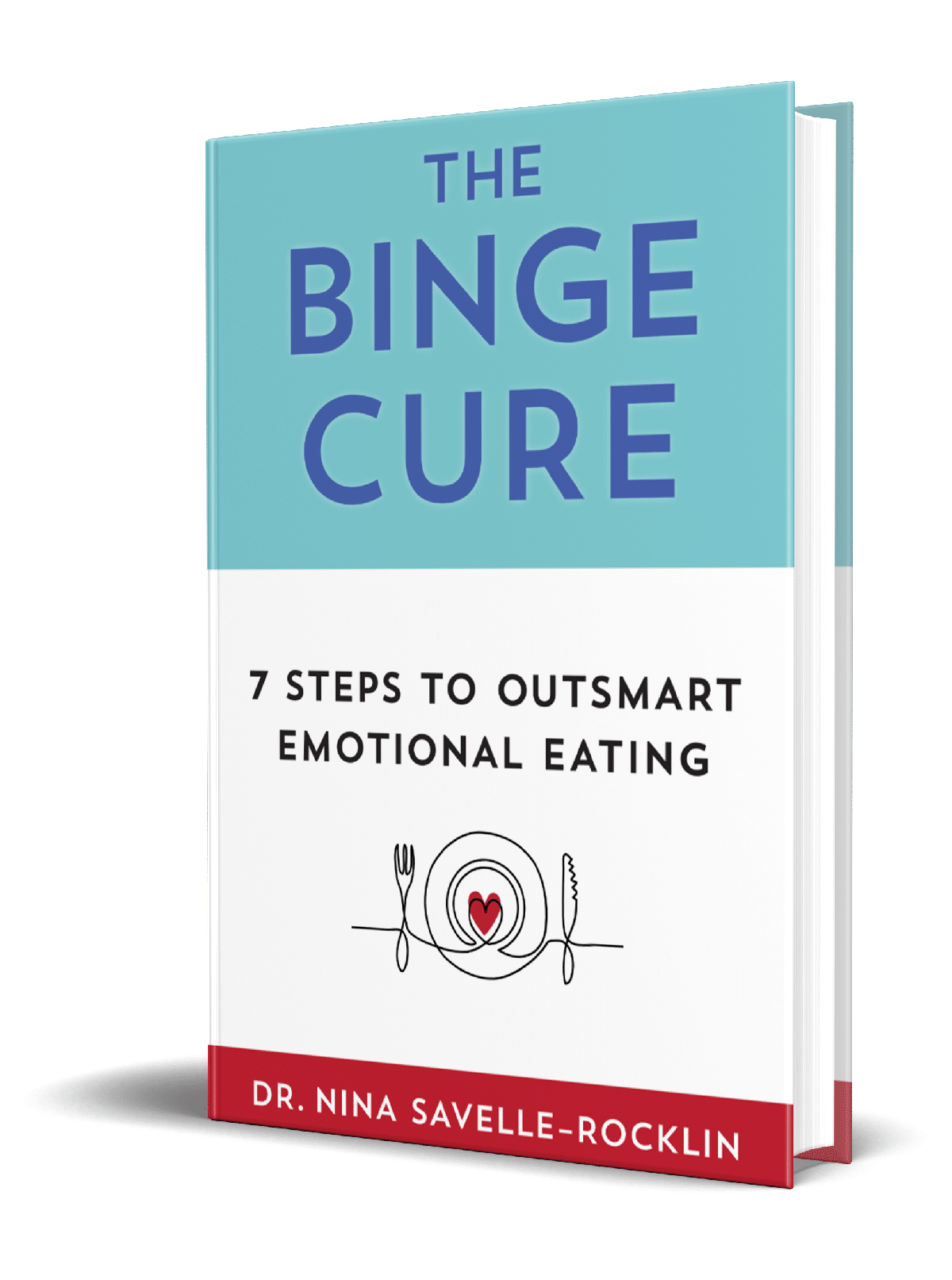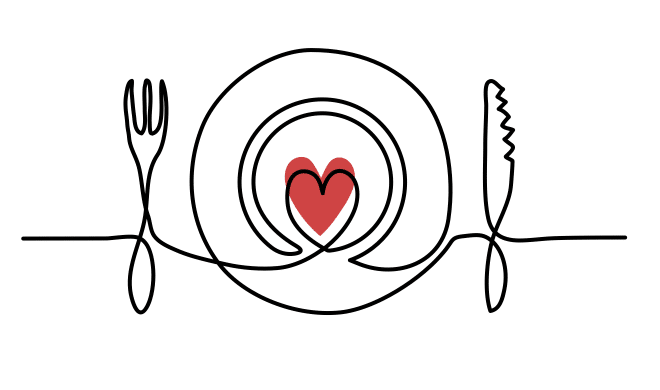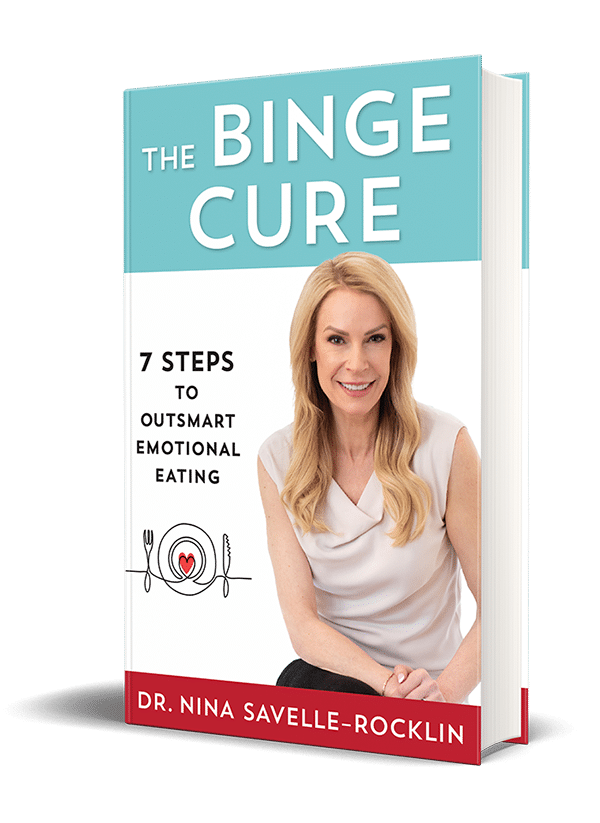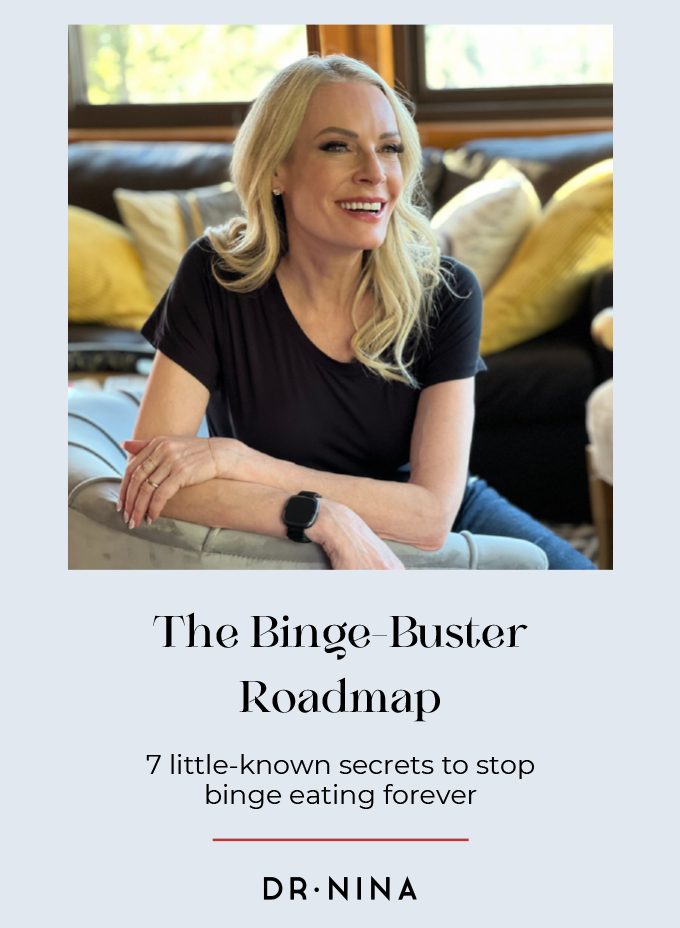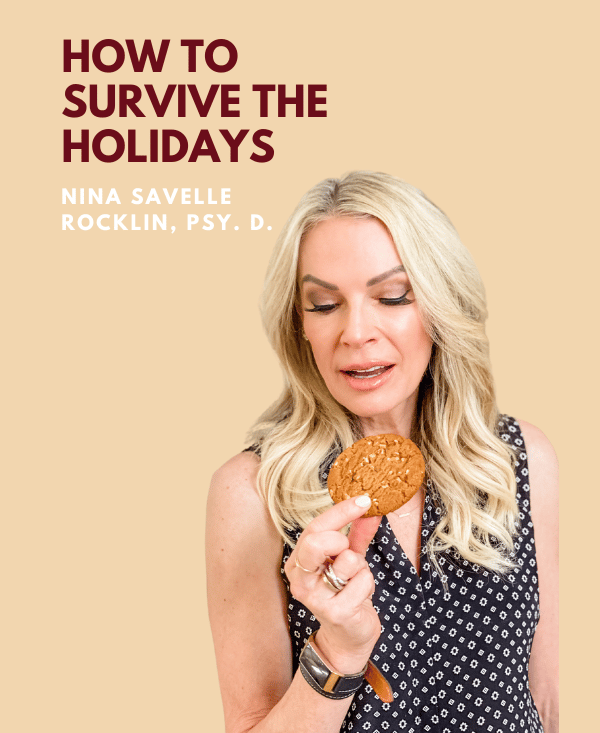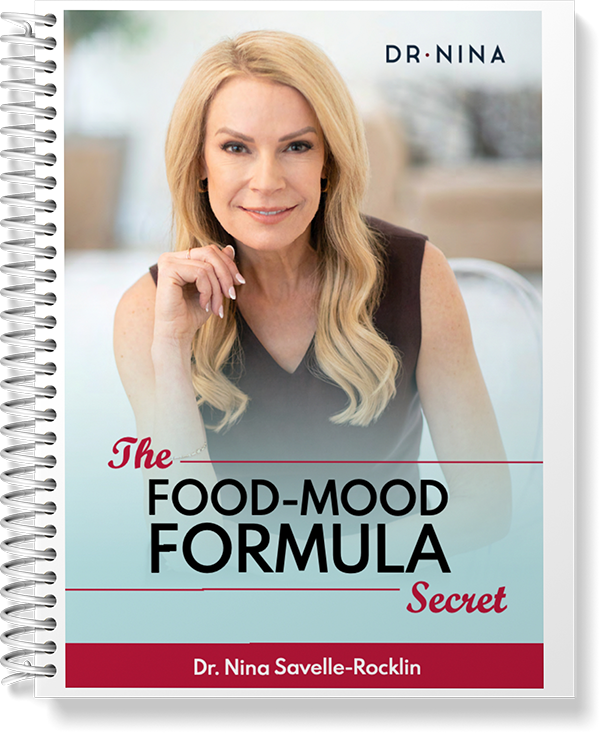Dr. Nina Savelle-Rocklin
Exploring the Lesser-Known Type of Eating Disorders

Table of Contents
- What is Binge Eating Disorder (BED)?
- Here are the 8 lesser-known types of eating disorders
If you feel out of control around food and can’t stop eating, it doesn’t mean you’re weak or lack willpower. And you are not a food addict. You could have Binge Eating Disorder (BED), which is the most prevalent yet misunderstood type of eating disorder.
What is Binge Eating Disorder (BED)?
Those with BED rarely realize they have a diagnosable and treatable condition. Binge Eating Disorder is characterized by bingeing, which means consuming a large amount of food in a short period of time and feeling out of control while eating.
The amount of food is more than what most people would eat. These episodes happen at least once a week for three months and are associated with specific symptoms such as eating alone, feeling guilty or disgusted after eating, and eating until feeling uncomfortably full.
Many people know they’re bingeing, but they don’t realize this is eating disorder behavior. In fact, Binge Eating Disorder is actually the most prevalent type of eating disorder. More people struggle with binge eating than anorexia and bulimia combined.
There are actually many different eating disorders–and they affect a lot of people worldwide. Yet because these conditions aren't well known, it's often tough to get the right diagnosis and treatment.
In this blog post, I'm going to take a closer look at eight different eating disorders you may not have heard of before.
Here are the 8 lesser-known types of eating disorders
Binge Eating Disorder Not Otherwise Specified (BED-NOS)
Amy binged on food about once a month, each time feeling as if a monster had taken her over. “Every once in a while, I completely lose it with food. Something snaps, and I’ll eat everything in sight,” she said. “I even eat things that aren’t food, like dry oatmeal. I get to where my stomach hurts, but I keep eating.”
Since Amy only binged once a month, she did not fit the criteria for Binge Eating Disorder, which requires weekly binges for a diagnosis. She had Binge Eating Disorder NOS, or Not Otherwise Specified.
What is Binge Eating Disorder Not Otherwise Specified (BED-NOS)?
This diagnosis is given when people shave some symptoms of binge eating disorder but don't meet the criteria for a full BED diagnosis. Like Amy, the frequency may be less. Or, there may be regular binge eating episodes but no distress or guilt afterward.
Regardless of whether you meet the criteria for Binge Eating Disorder or are outside that diagnosis, problematic eating needs your attention because Binge Eating Disorder and BED NOS are curable. Bingeing is a negative coping strategy, and the good news is that when we cultivate new ways of coping, our relationship with food changes for good.
Chewing & Spitting
“It started out as a way to have my cake and eat it, too,” said Nicola. “I could have the taste of cake, but not the calories. But it’s gotten out of hand. Every night after work, I spend my whole night chewing and spitting.”
What is Chewing and Spitting (CAS)?
Chewing and Spitting (or CAS) is a form of disordered eating where people chew their food but don't swallow it – instead, they spit it out. It's often used consciously as a way to control weight but unconsciously, it’s a way to manage anxiety, depression, or other painful states.
People with CAS tend to eat high-calorie or high-carb foods like candy, cookies, and bread. The behavior is usually done in secret, and brings up a lot of guilt and shame.
Some symptoms of CAS aside from the behavior of chewing and spitting include an intense fear of gaining weight, preoccupation with food and body image, a distorted body image such as dysmorphia, and poor self-esteem.
Orthorexia
“Sugar is toxic. I never touch it,” Paige said with pride. She only ate certified organic fruits and veggies from a local farmer's market. She was particular about where she got her food and even bought olive oil from a special farm that only sold to select markets. And she didn’t go to restaurants because she couldn’t trust the food’s purity.
Paige was more concerned with the quality of her food rather than her weight. She was obsessed with the idea of “eating clean” and avoiding any food that could be potentially harmful to her body.
The idea of “clean eating” is a trend that's been getting a lot of attention lately. This means only eating fresh, healthy food and avoiding anything that's processed or artificial. But this focus on “clean” eating can sometimes go too far and become an unhealthy obsession.
What is Orthorexia?
In fact, there's a term for this – it's called orthorexia. The word comes from the Greek “orthos,” which means “right” or “correct,” and it refers to an extreme preoccupation with eating only pure food. According to Steven Bratman, who coined the term in 1997, people with orthorexia are more concerned with feeling pure than with losing weight.
But here's the thing–this obsession with clean eating isn't just about physical health. Consciously, it’s about wanting to feed the body only the purest and healthiest foods. Unconsciously, it’s a way for people to disavow any unwanted or “dirty” thoughts, wishes, or emotions, like aggression or sexual desire.
For example, Paige she couldn't stop thinking about her digestive tract and the “disgusting mess” that food made in her stomach. This obsession with purity had led her to stop socializing with friends and become increasingly isolated, where she felt safe from the chaos of life.
By focusing on pure, clean food, those struggling with orthorexia are trying to ward off any messy feelings or wishes. Unfortunately, this can lead to extremes. Like Paige, many refuse to go out to dinner at restaurants, or visit friends, since they don’t know what’s in the food. Orthorexia leads to a diminished social life, anxiety, and depression.
Night Eating Syndrome
“It’s like I don’t have a choice,” said Tracy, describing how she woke up several times a night to raid the kitchen. “I just have to get out of bed and eat something. It happens every night multiple times. I’m exhausted, and I don’t know how to stop.”
Tracy was struggling with Night Eating Syndrome (NES), a disorder characterized by late-night binges on large amounts of high-calorie snacks, often accompanied by feelings of guilt and depression afterwards.
People suffering from NES don’t just eat at night–they often wake up multiple times throughout the night, specifically to binge. They’re not as hungry during the day, and their sleep is disrupted, which impacts many aspects of their lives.
It’s important to note that night-eating syndrome rarely involves hunger. Those with NES wake up feeling a desperate need to eat. They feel as if they cannot go back to sleep until they’ve eaten something.
Also, there’s no sleepwalking involved. People with NES are completely awake during these nighttime eating experiences, unlike those who eat while sleepwalking. Night Eating Syndrome has been linked to genetic factors as well as Seasonal Affective Disorder, as bright light therapy has been show to help. There’s also a link to Binge Eating Disorder, as many people who have NES also have BED.
Pica Disorder
What is Pica?
Pica Disorder involves craving and eating things that most of us would never even consider putting in our mouths. People with Pica might eat all kinds of non-food items, like ice, hair, chalk, and even cigarette butts.
Unlike most eating disorders with psychological underpinning, which are negative coping strategies, Pica is a medical condition that is believed to develop because of biological reasons–nutrient deficiencies in particular.
People with Pica often have low levels of iron, an essential mineral that our bodies need. When our bodies are low on iron, we can start craving things that aren't food, like dirt or ice. It’s not entirely known why this happens, but one theory is that our bodies are trying to get the minerals they need in any way they can.
Poverty also increases the risk of Pica. When people can’t afford nutritious food, they may crave things that aren't food at all, like dirt or clay. This is a problem in some parts of the world where poverty is widespread and is especially prevalent in Africa. As a society, we need to ensure that everyone has access to the healthy food they need to be healthy.
Interestingly, Pica is more common in pregnant women. A woman’s nutrient needs can increase during pregnancy, when their bodies need certain nutrients. It’s important for pregnant women with Pica to seek medical help, since eating these types of non-food items can be dangerous for both mother and baby.
People with Pica may be ashamed of their behavior. They think it’s weird that they eat things like paper or soap, and don’t realize they have a treatable condition. Yet, like all eating disorders, it is treatable.
Anorexia Athletica
“The doctor said I need to rest my knee,” said Danielle, “but I can’t do that. I have to run at least five miles and if I can’t do that, I’m going to lose my mind.
Danielle had injured her knee but she couldn’t stop running out of a fear of gaining weight and getting out of shape. She was suffering from Anorexia Athletica, which is also known as Sports Anorexia or Compulsive Exercise Disorder. It’s characterized by an excessive and compulsive need to exercise, along with distorted body image and an obsession and preoccupation with weight and with body shape.
What is Anorexia Nervosa?
This condition is more common among athletes, but it can also affect non-athletes who use excessive exercise as a form of weight control. The symptoms of Anorexia Athletica include over-exercising, restricting food intake, being preoccupied with weight, shape, and muscle tone, and fearing weight gain or the loss of muscle tone.
This fear can interfere with relationships, such as when people prioritize exercise at the expense of relationships and life responsibilities.
Identifying and changing negative thoughts and behaviors related to exercise and body image is a necessary part of healing from this condition.
Diabulimia
Diabulimia is a condition that’s a combination of two disorders: type 1 diabetes and an eating disorder. People with Diabulimia, also known as ED-DMT1, have Type 1 diabetes. They intentionally restrict or omit insulin doses in order to lose weight. Insulin is a hormone that regulates blood sugar levels, and people with type 1 diabetes need to take insulin injections or use an insulin pump to survive.
People with Diabulimia often have a history of dieting and weight cycling, which is a pattern of losing and gaining weight–also known as yo-yo dieting. They may also have a history of disordered eating and struggle with depression, anxiety, and body dysmorphic disorder.
Besides restricting or omitting insulin doses in order to lose weight, other symptoms involve a preoccupation with weight, shape, and muscle tone, a fear of gaining weight, and distorted body image.
Diabulimia can have serious consequences, including high blood sugar levels, known as hyperglycemia, which may lead to long-term complications such as diabetic ketoacidosis. This causes damage to the eyes, nerves, kidneys, and other organs in the body.
In addition, it can lead to severe dehydration, fainting, and even result in a coma. Therefore, it’s crucial for those with Diabulimia to seek help as soon as possible to prevent serious health complications.
Selective Eating Disorder (SED)
“It’s like living with a five-year-old boy,” Michelle said of her husband Steve, who had just celebrated his 50th birthday. “He only likes white food and some vegetables. He cuts the crusts off bread and only eats chicken if it is white meat. The one vegetable he eats is broccoli.”
Steve had a limited number of foods that he would eat. He became nauseous at the thought of what he considered “slimy” foods such as sauteed spinach. At his birthday parties, the birthday cake was always white with white frosting. Michelle said, “Pardon the expression, but I’m really fed up.”
Her husband was suffering from Selective Eating Disorder (SED) is also known as Avoidant/Restrictive Food Intake Disorder (ARFID).
What is ARFID?
It's a condition where people limit the food that they eat, usually avoiding certain textures, smells, or tastes of certain foods. This can lead to malnutrition, and nutrient deficiencies and can even stunt growth in children.
SED is not the same as anorexia nervosa, a condition in which people restrict food because they’re terrified of gaining weight. With SED, people may not be particularly concerned about their weight. They usually just have a strong aversion to certain foods.
Symptoms of SED include difficulty eating in social settings, avoiding certain textures, smells, or tastes of food, and an extremely limited range of foods that the person will eat.
As with many eating disorders, the cause of SED is not completely understood, but it's thought to be a combination of genetic, environmental, and psychological factors. It may also be related to traumatic experiences or negative associations with certain foods. SED can lead to social isolation and difficulty with relationships due to these restrictions and the preoccupation with avoiding certain foods.
As you can see, there are many forms of eating disorders. Exploring these lesser known eating disorders helps deepen our understanding of certain food behaviors instead of labeling them as “weird” or attributing them to a lack of control or willpower. With knowledge comes the opportunity for treatment and healing. Eating disorders are treatable and there is hope for lasting change.
Sick of obsessing about every bite?
GET THE CURE
The Binge Cure Book!
Enter “CURE” to receive a 20% discount.
No, I don’t want access to this terrific resource to help me overcome binge eating.
The Author

Dr. Nina Savelle-Rocklin is a renowned author and podcast host and one of the nation’s leading psychoanalysts known for the psychology of eating. Her signature message of, “It’s not what you’re eating, it’s what’s eating ‘at’ you” has resonated with hundreds of thousands of listeners from around the globe in 40 countries. As founder of The Binge Cure Method, she guides emotional eaters to create lasting food freedom so they can take back control of their lives and feel good in their bodies.
Related Blogs

